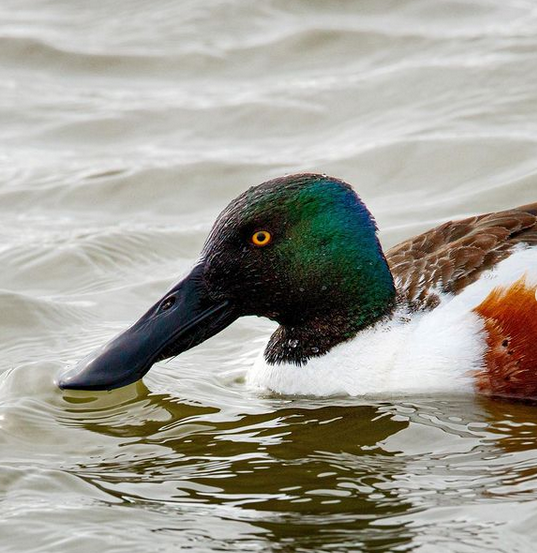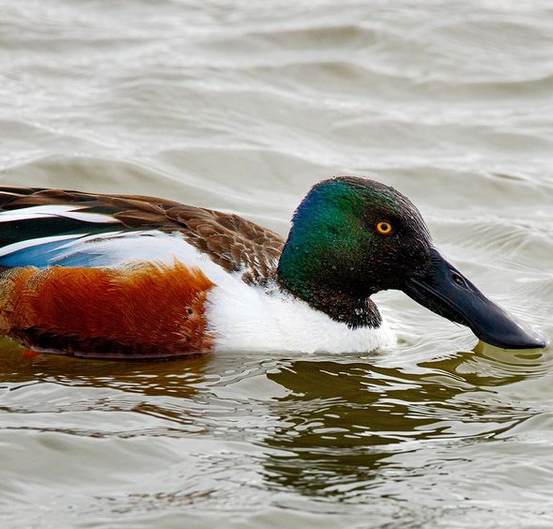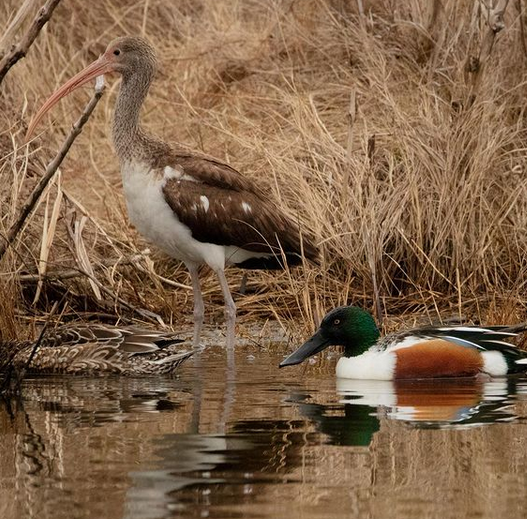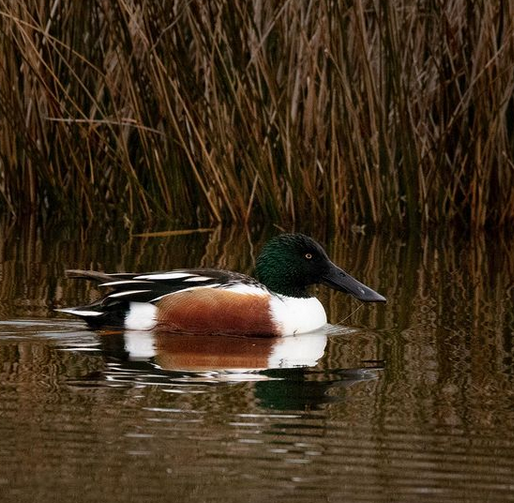For sure one of the most unique looking ducks we’ve got here in N.C. during the wintertime is the Northern Shoveler.

The group and I spotted several of these handsome birds during the trip to the Pea Island NWR last month and could not have been more pleased to see them!
We even had a chance to view this pair from under 10 feet away which allowed for some excellent photo opportunities as they happily swam right in front of us on the South Pond.


Northern Shovelers are uniquely adapted for a life spent foraging for a meal underwater. They feed by drawing water into its large spoon shaped bill and then pump it out through the sides with their tongue.
Their bill is lined with a long comb-like lamellae which filters out floating food particles such as tiny crustaceans, molluscs, insects, larvae as well as seeds and pieces of leaves and stems of aquatic plants.
In addition to the food particles they’ll also dine on water beetles, small minnows, and snails when available.

As is the case with other members of the dabbling duck family, Northern Shovelers may be found foraging for meal along the shorelines of the shallow, still or slow moving waters of marshes, ponds, flooded out fields and in our coastal impoundments.
These guys will hang out in North Carolina until
mid April before departing to their northern breeding grounds so there is still time for you to get out there and see them if you can!
Photos by @sally_siko of @birdwatching_nc on the fabulous full frame @canonusa
#5Ds


